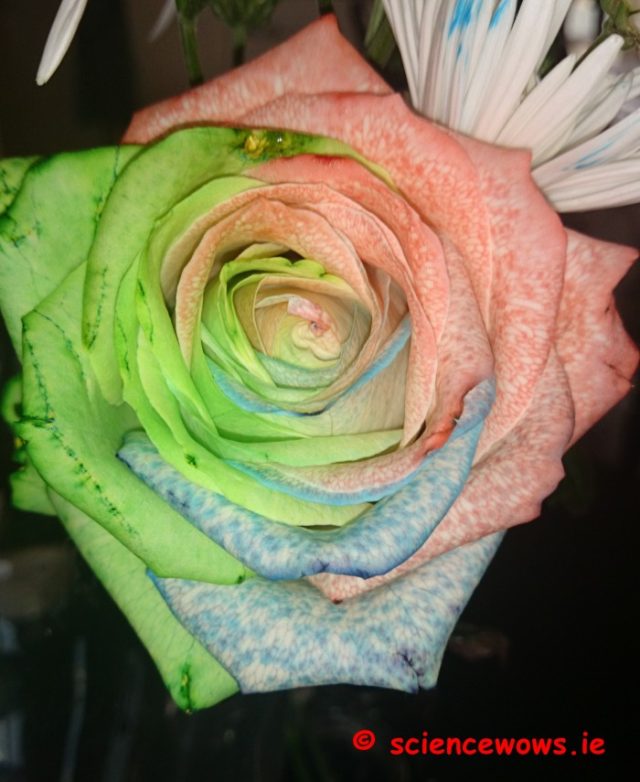This week’s Fun Friday post is a variation on a previous blog…. but after Greenside Up shared a photo with me of a multi-coloured rose, I just had to try to recreate it.
This experiment is a great way of explaining transpiration… or just creating a colourful rose to dazzle and amaze your friends.

You will need…
- One white (or pale coloured) flower, preferably a rose
- A number of different food colourings… I used red, green and blue
- Some small vases or jars
- A sharp knife
What to do…
Place an entire bottle of food colouring into each jar and then top up with water until the jar is about half full
Now for the tricky bit, slice the stem of the flower into three pieces* (vertically)… so that the stem splits into three at the end;
Place each piece of the stem into a different jar and prop up if necessary
Leave overnight
*It may be easier to split the stem into four pieces and then either put the fourth part into a jar of water, a jar of a fourth colour, or simply add it into one of the other three jars

The results…
You should find your rose looks something like this…

What is happening…
Water is transported up the stem of the flower through little tubes called xylem. The coloured water will travel through the xylem all the way up the stem to various parts of the plant and right up to the flower. The water ultimately evaporates out of the plant through little pores called stromata. This process is called transpiration and is much like perspiration in humans.
The food colouring is drawn up the xylem along with the water, and changes the colour of the petals when it reaches the flower. Different parts of the flower receive their water supply from different xylem, hence different parts of the flower end up different colours.
Now I have a question for you…. if you remove the flower once the petals are coloured and place it back in plain water…. will the petals retain their colours or lose them? Let me know what you think, or even better, try it out and see!
Pingback: 4 Valentine experiments 4 your loved ones - Dr. How's Science Wows
Pingback: Coloured flower science experiment using tulips - Science Wows
What a cool idea! And I might just have a rose to do it in about a week’s time, thanks to a special lady that sent me flowers 😉
Oh how nice of her Laura 😉
This brought back some of my a-level biology lessons! My guys are only 4, but I think they’d enjoy this (and learn something new!) :0)
Oh do give it a go Olivia, it is such fun 😉
That is so cool!!
Thanks Sara, it has certainly brightened up the kitchen 😉